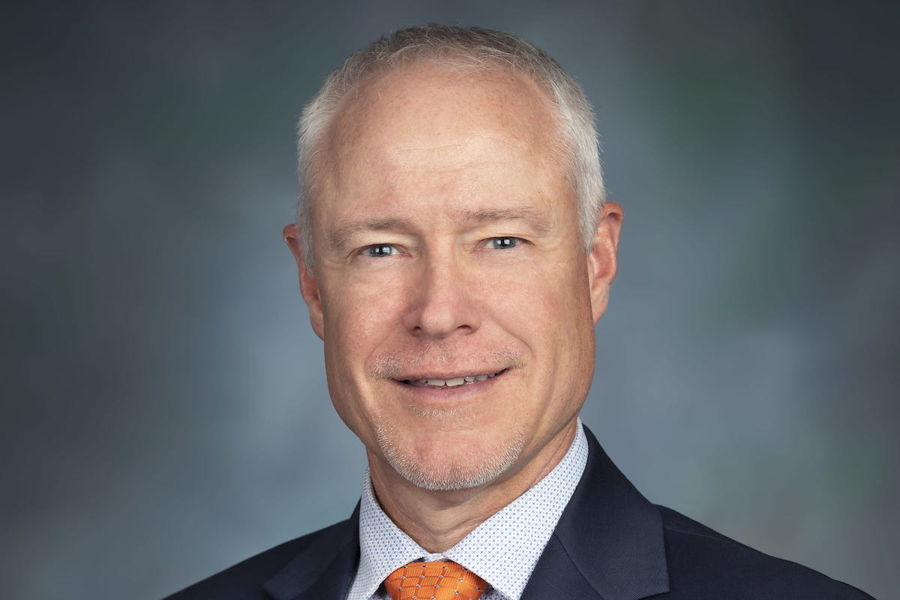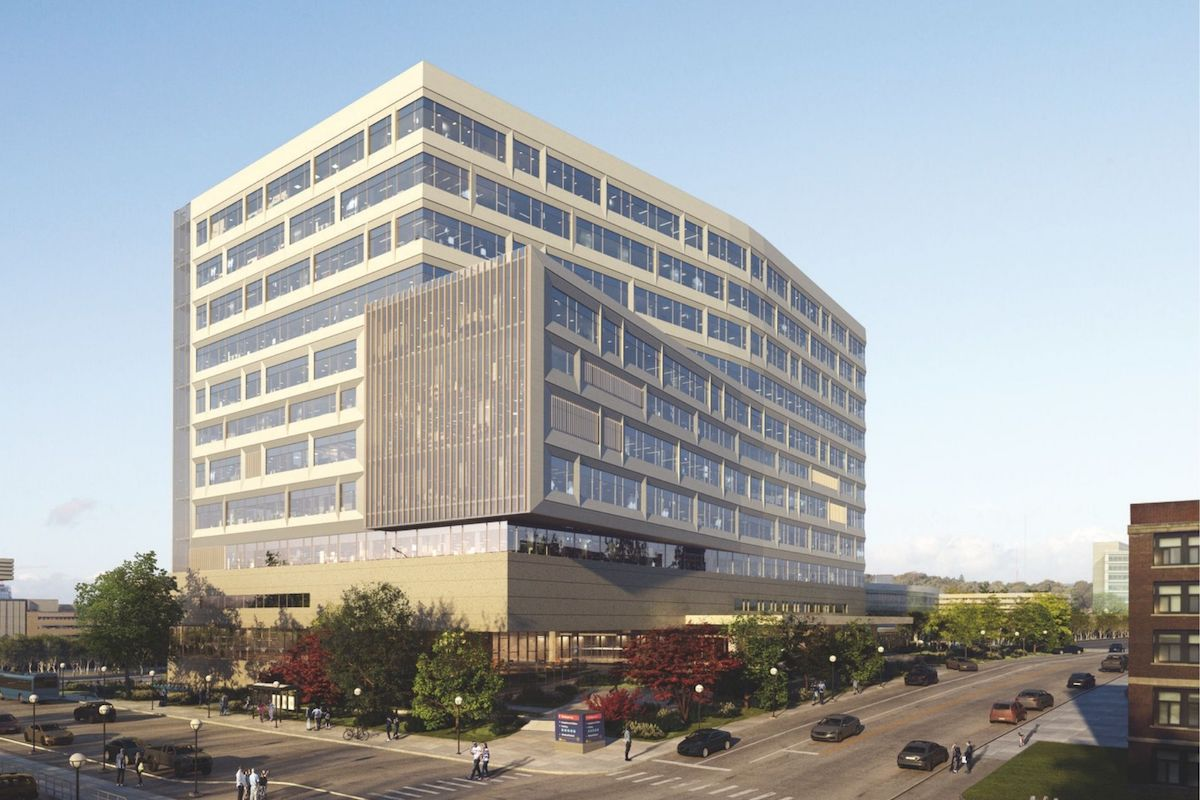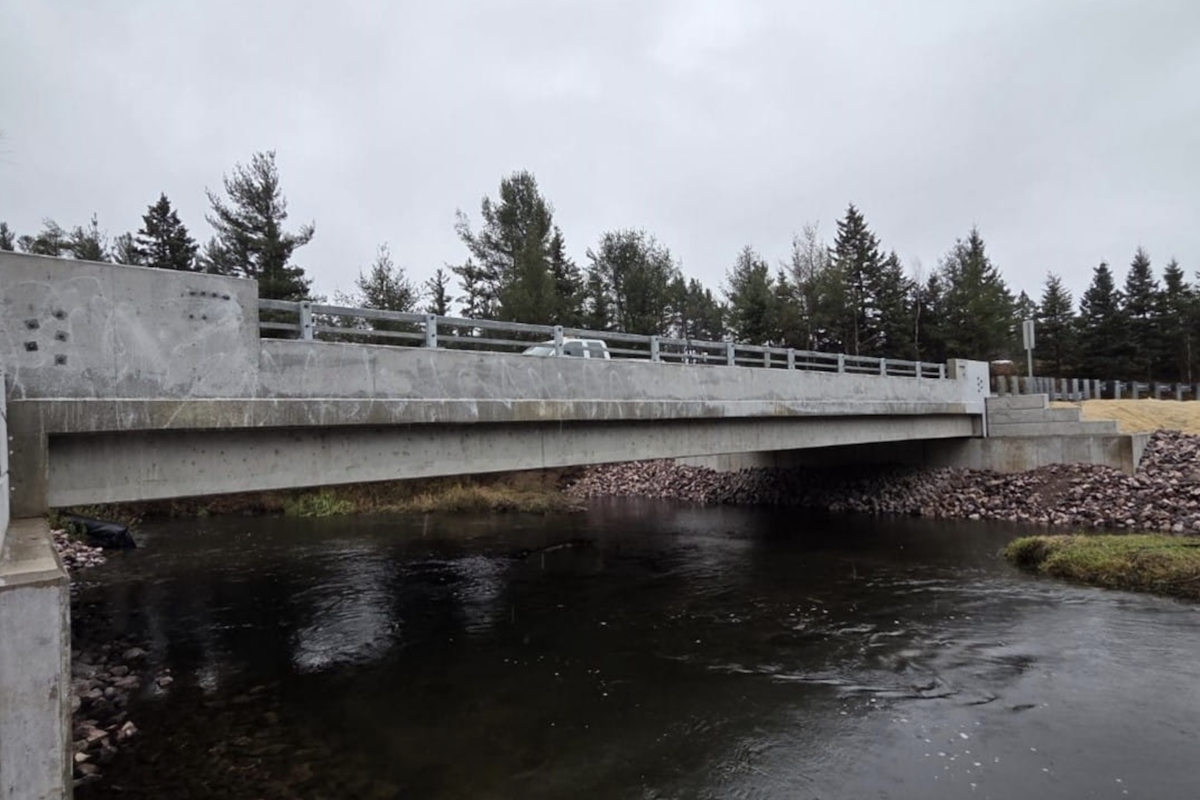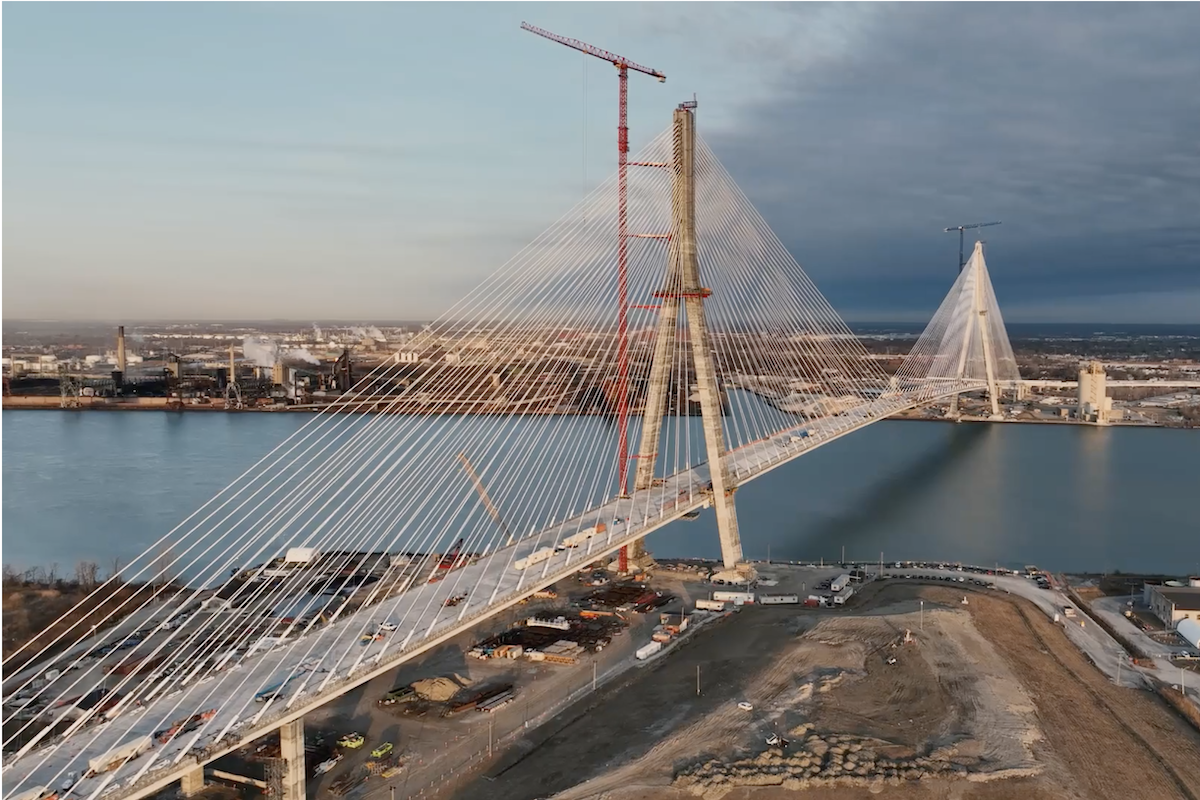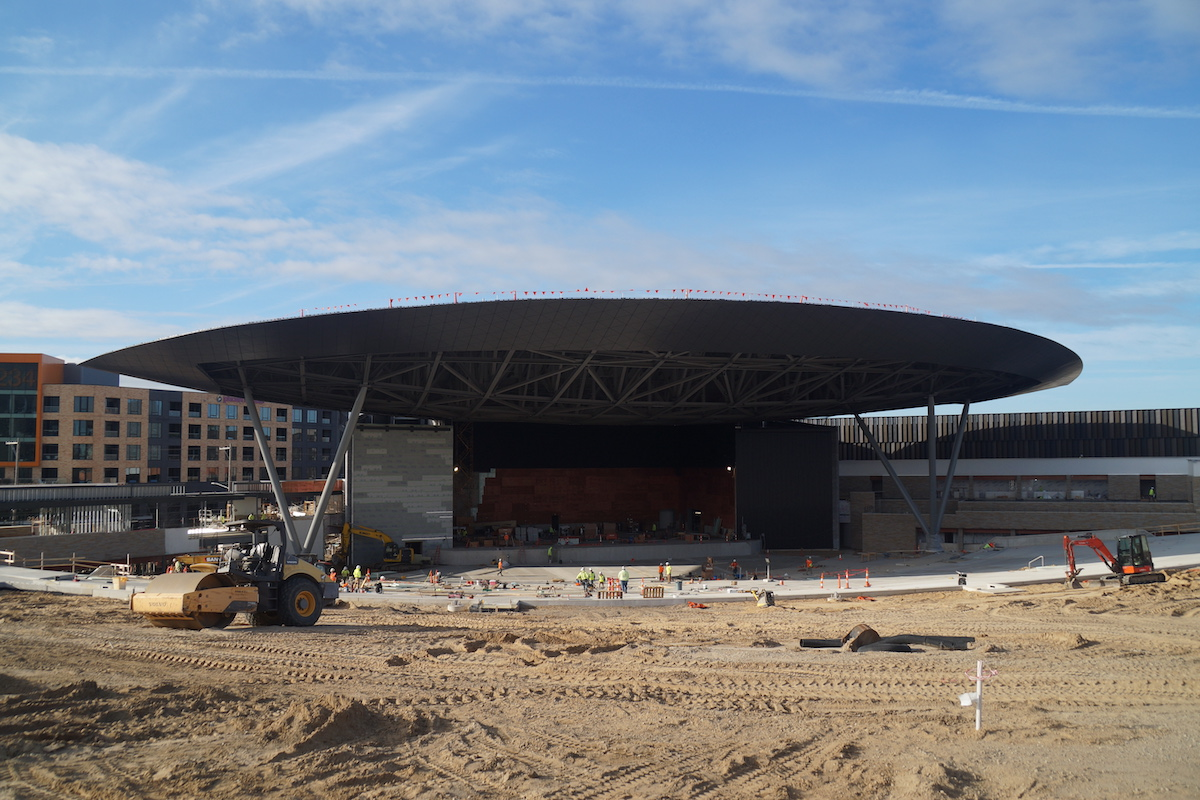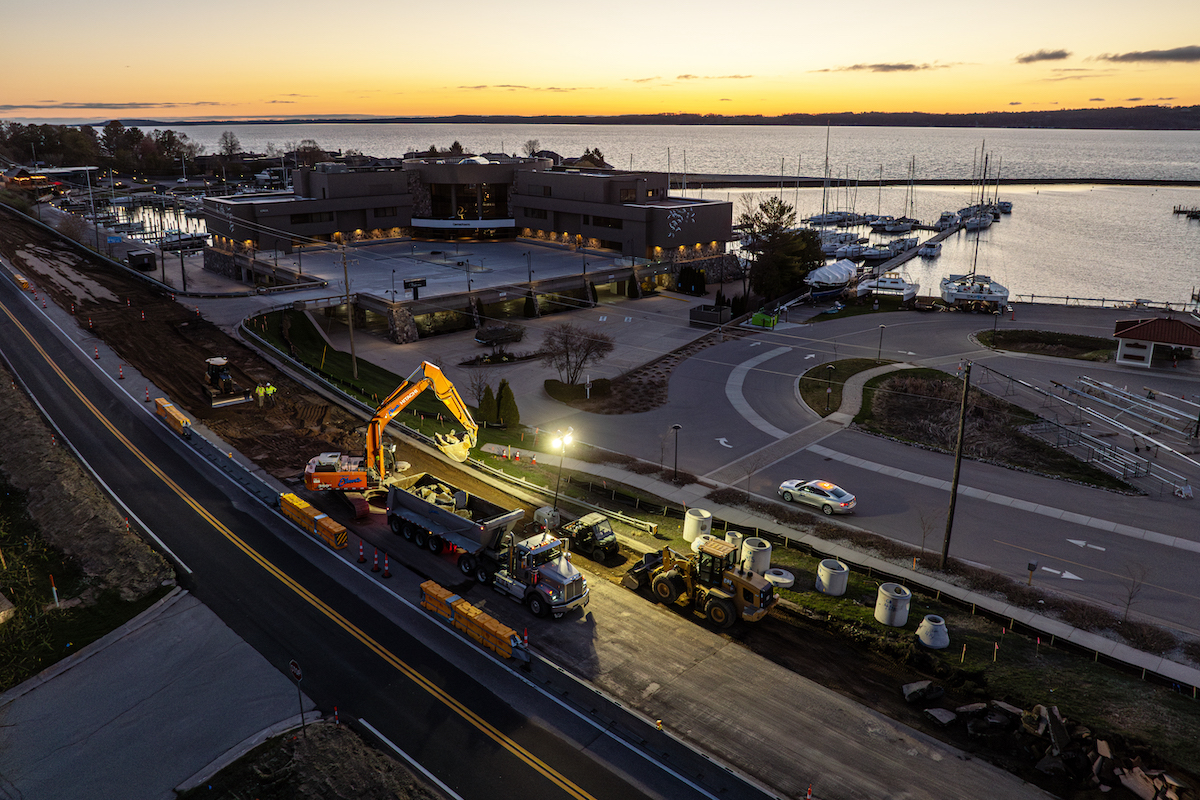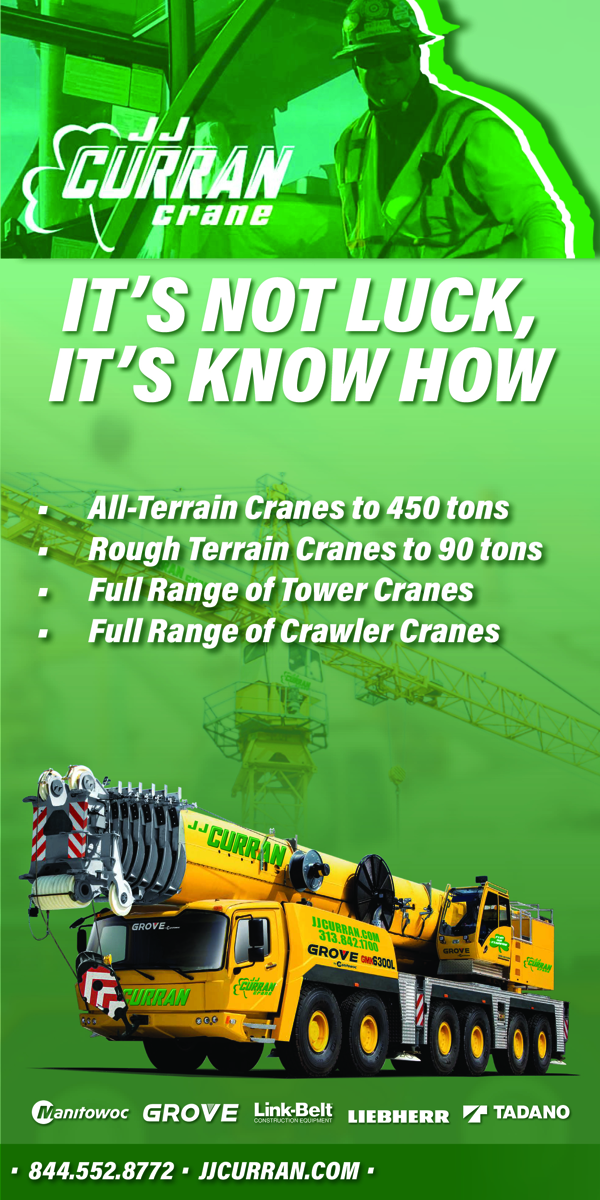Achieving that, however, requires coordination of a multitude of elements on a complicated site.
“Spanning 72 acres and three separate but interconnected sites, the project is bounded by highways, protected waterways, buildings, railroad, and roadway infrastructure,” said Brett Bergdolt, Project Manager for Kiewit Infrastructure Co. of Omaha, Construction Manager on this CMGC project. “The project scope includes extensive civil infrastructure and earthwork packages to reconstruct public areas, public access spaces, and specialty amenities at all three parks.”
In addition, the location near an existing flood wall requires time-consuming permitting from the U.S. Army Corps of Engineers (USACE), while past remediation of hazardous materials through almost half the site means stringent measures to protect workers and the environment during underground work.
In July 2022, Gene Leahy Mall opened to visitors. Heartland of America Park and Lewis & Clark Landing – which both involve more complicated design and construction challenges – are scheduled to open in 2023.

| Your local Trimble Construction Division dealer |
|---|
| SITECH Michigan |
With a complete redesign and redevelopment, the parks were rebranded under one identity as The RiverFront. Major amenities include a performance pavilion, 10 miles of pathways, 5 acres of grassy lawn, five children’s play areas, four water features, a dog park, sculpture garden, urban beach, and ice-skating/rollerblading rink.
Funding for the Riverfront Revitalization project came from a public-private partnership, with $50 million from the City of Omaha and the remaining $275 million donated by local philanthropists. Owned by the city, The RiverFront will be managed and maintained by Omaha’s nonprofit Metropolitan Entertainment & Convention Authority (MECA).
In 2017, the Downtown Riverfront Trust issued a Request for Proposals and hired OJB Landscape Architecture of San Diego as Lead Landscape Architect. Omaha-based HDR was a direct hire because of their previous experience with the parks’ remediation, local railroads, and USACE permitting process. During preliminary design, HDR served as a subconsultant to OJB. At the client’s request as the project proceeded to final design in February 2019, HDR became the lead firm due to the extensive permitting and agency coordination. MECA became the contracting authority for the project’s design and construction.
MECA awarded Kiewit’s contract in January 2019 and construction started in March 2019. Kiewit self-performed about half the work, demolishing and removing material in the existing parks, placing 350,000 linear feet of underground utilities, conducting 500,000 cubic yards of excavation and embankment work to change the grade and shape of the parks, fabricating and installing aboveground architectural amenities, and placing 10,000 cubic yards of cast-in-place concrete structures.
“They demolished the buildings, left everything onsite, and buried it all under a geosynthetic clay liner (GCL) and 6 feet of fill,” said Chris Koenig, HDR’s Design Manager. “Covenants were put into place to protect the remediated site.”

| Your local Deere & Co dealer |
|---|
| AIS Construction Equipment |
HDR worked with the Nebraska Department of Environment and Energy (NDEE) and the project team to safely add trees, playgrounds, and other park features.
“We made sure to keep a minimum of 3 feet over the top of the GCL,” Koenig said. “We worked with the landscape architect to have trees without deep roots, so most of them are ornamental. When Kiewit installed utilities, they spent a lot of time potholing the existing utilities, but also the GCL to make sure the planned improvements stayed above it.”
Portions of Heartland of America Park were originally a heavy industrial area. Remediation occurred in the 1980s.
“Back then, there weren’t the regulations there are today,” Koenig said. “They buried a substantial amount of waste material onsite; some of it they stabilized and some they left as is. We had ideas of where the materials were based on drawings, but those were very inaccurate. We spent a substantial amount of time investigating the site as design and construction proceeded, documenting the material that was encountered.”
HDR worked with the City of Omaha and NDEE to develop a comprehensive materials handling plan. Everything that came out of the ground had to be containerized and tested.

| Your local Trimble Construction Division dealer |
|---|
| SITECH Michigan |
For the 82,000-square-foot Kiewit Luminarium, designed to offer hands-on STEM activities, crews needed to install 217 piles at Lewis & Clark Landing.
“The piles go through the waste down to bedrock,” Koenig said. “All the material brought up had to be containerized and tested. Even the drilling fluid had to be collected and tested before disposal.”
“Everything built within these parks required review by USACE and permitting,” Koenig said. “If we made any changes, those had to be reviewed. Typically, it takes 90 days after a submittal to obtain the permission, which had to be considered with project scheduling.”
In addition, “Because Lewis & Clark Landing and Heartland of America Park border the railroad, we maintain constant coordination with railroad teams to minimize disturbances in their day-to-day operations,” said Reid Korbelik, Kiewit’s Construction Manager.
In summer 2022, Kiewit used a 600-ton Liebherr 1600 crane, one of the largest in their fleet, to erect Farnam Pier in Heartland of America Park. The crane allowed the 350,000-pound bridge to be set in one continuous piece.

| Your local Trimble Construction Division dealer |
|---|
| SITECH Michigan |
“We successfully completed this pick in about an hour without interruption of train traffic,” Korbelik said.
“The skate ribbon has to be perfectly level 100 percent of the time to allow for development of the ice surface,” Koenig explained. “The rink can’t settle over the years. The entire ice rink is supported by piles driven to bedrock. Piles were also installed under Farnam Pier and some other structures. Some of the art features are supported by piles because of soft soil.”
Old structures add to the underground complications. “This area was initially developed in the 1850s,” Koenig said. “There’s a lot of buried infrastructure that nobody has records on. The project had a few surprises during construction that had to be worked around once we found them.”
To minimize conflicts, HDR maintains a clash detection model that incorporates everything below grade. The model was developed using design drawings. New construction is surveyed as it’s installed, with the information provided to HDR for model updates.
“All of the information is incorporated into the model file, and we can spin it around and see all the utilities, footings, H-piles, foundations – even every tree root bulb,” Koenig said. “The model is reviewed for potential conflicts before construction. The model will also help MECA going forward if they add an art piece or make other changes in the parks.”

| Your local Trimble Construction Division dealer |
|---|
| SITECH Michigan |
In addition, “Almost every material used in The RiverFront project was customized or is highly unique,” Bergdolt said. “Materials for the Lewis & Clark Landing play equipment were sourced from Canada and the Czech Republic; stone for the Gene Leahy Mall Cascades water feature was sourced from China; and the Thermory modified ash, used for the wood decking in all the parks, was sourced from Estonia. One hundred percent customized fabrication was used for Farnam Pier; the Lewis & Clark Landing bleacher seating and play equipment; and the Gene Leahy Mall performance pavilion, play arches, and facet.”
The project also used many regionally sourced materials, including more than 60,000 cubic yards of specialty soil to facilitate placement of over 150,000 plants and trees. To preserve undeveloped land, 100 percent of the project is located on previously developed areas. Those efforts contributed to the project becoming the first in Nebraska to receive an Envision award from the Institute for Sustainable Infrastructure, earning a Platinum sustainability rating in 2021.
The RiverFront Manager – Metropolitan Entertainment & Convention Authority, Omaha, Nebraska
Lead Designer – HDR, Omaha, Nebraska; Chris Koenig, Design Manager; Chris Cain, Design and Construction Manager; Sheila Potter, Lead CAD; Bryan Kumm, Geotechnical Engineer; Duane Denton, MEP Design Lead
Landscape Architect – OJB Landscape Architecture, San Diego, California; Kyle Fiddelke, Principal; Nathan Elliott, Landscape Architect Manager
Construction Manager – Kiewit Infrastructure Co., Omaha, Nebraska; Brett Bergdolt, Project Manager; Reid Korbelik, Construction Manager
Photos courtesy of HDR





















